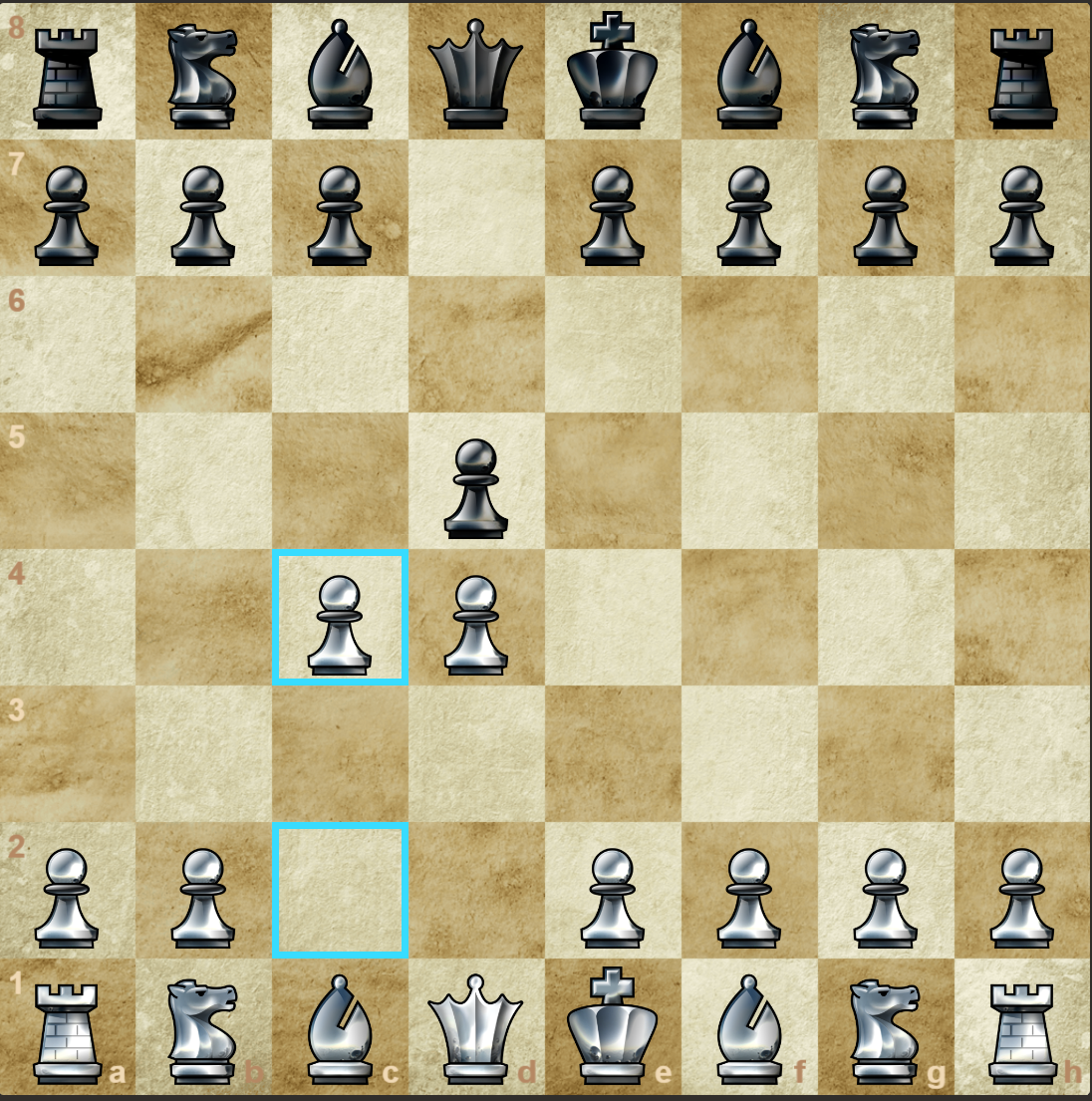Historical Roots of the Queen's Gambit


William T Green
In the grand theater of chess, a game deeply rooted in strategy, intellect, and endurance, the Queen's Gambit has established its dominance as one of the most fascinating openings. The term "gambit" traditionally refers to a chess opening in which a player sacrifices material with the hope of achieving a resulting advantageous position. This core principle underpins the Queen's Gambit, but its complexity and allure go far beyond this simple definition.
Historical Roots of the Queen's Gambit
The Queen's Gambit's origins trace back to the 15th century, first documented in the "Göttingen manuscript," dated 1490, making it one of the oldest known chess openings. While its initial popularity waned in favor of King's Pawn openings, the Queen's Gambit saw a resurgence during the Romantic Era of chess in the late 19th century. It was during this time that masters like Wilhelm Steinitz and Johannes Zukertort regularly employed the opening in their matches, entrancing audiences with its subtle blend of aggression and strategy.
The Evolution of the Queen's Gambit
The Queen's Gambit, much like chess itself, has evolved over the centuries. By the late 19th and early 20th centuries, the Queen's Gambit Declined had become a popular response, characterized by Black's move 1...d5. This solid response ensured a stronghold in the center and paved the way for new strategic developments. The 20th century also saw the rise of the Queen's Gambit Accepted, where Black takes the pawn on d5, symbolizing a more dynamic, counterattacking approach.
Notable figures like Grandmaster Anatoly Karpov and World Champion Garry Kasparov have contributed significantly to the evolution of the Queen's Gambit. Kasparov, in his 1990 match against Karpov, showcased the potency of the Queen's Gambit Declined, making it a popular choice in competitive play.
Mastering the Queen's Gambit
The opening begins with the moves 1.d4 followed by 2.c4. The pawn on d4 stakes a claim in the center of the board, while the c4 pawn invites Black to seize the pawn, a gambit in the truest sense.
For the Queen's Gambit Declined, the general idea is to focus on solidifying your center with 1...d5, supporting it with ...e6, and developing your minor pieces. It's a stable, solid opening choice that allows you to fight for control of the center without taking unnecessary risks.
Conversely, the Queen's Gambit Accepted (1.d4 d5 2.c4 dxc4) can be an exciting and dynamic choice, but it requires precise play. After accepting the gambit, Black must defend the extra pawn while simultaneously aiming for quick development and castling.
Understanding the history and evolution of the Queen's Gambit helps deepen one's appreciation for this classic opening. It's a testament to the timeless appeal of the game of chess – a blend of art, science, and sport that has captivated the world for centuries.
"Chess is a war over the board," famously quoted by Bobby Fischer, "The object is to crush the opponent's mind." The Queen's Gambit, with its balance of strategy, tactics, and allure, is an exquisite weapon in this intellectual battle.
Abhijeet Gupta vs Deep Sengupta
PGN: 1. d4 d5 2. c4 dxc4 3. Nf3 Nf6 4. e3 e6 5. Bxc4 c5 6. O-O a6 7. Be2 cxd4 8. Nxd4 Be7 9. b3 O-O 10. Bb2 Bd7 11. Nd2 Nc6 12. N4f3 b5 13. Rc1 Rc8 14. a3 Qb6 15. Bd3 Rfd8 16. Qe2 h6 17. Bb1 Qb8 18. h3 Be8 19. Rfd1 Nd5 20. Ne4 Na5 21. Rxc8 Qxc8 22. Rc1 Qa8 23. Nd4 Rc8 24. Rd1 Nf6 25. Nxe6 Nxe4 26. Nxg7 Rc5 27. Nxe8 Rg5 28. Qf3 f5 29. Nf6+ Bxf6 30. Bxf6 1-0
Key Takeaways & Analysis:
The game started with the Queen's Gambit (1. d4 d5 2. c4), which is one of the most classical and well-respected openings in chess. The game continued with 2...dxc4, which is known as the Queen's Gambit Accepted. The idea behind this move is to temporarily give up the center to disrupt White's plans.
The game continued with standard development moves until move 7...cxd4. This move is a bit unusual in the Queen's Gambit Accepted, as it opens up the center prematurely and allows White to gain a tempo after 8. Nxd4.
The middle game was characterized by maneuvering and piece exchanges. The critical moment came at move 25...Nxe4. This move seems to be a blunder, as it allows White to capture the e6 pawn with the knight, attacking the queen and the rook simultaneously (26. Nxe6). This move swung the game heavily in White's favor.
The final phase of the game was dominated by White's aggressive play. The move 27. Nxe8 was a brilliant tactical shot, exploiting the pinned rook on g5. After 28. Qf3, White had a decisive material advantage and a strong attack.
The game concluded with 30. Bxf6, leaving Black in a hopeless position. Black's king is exposed, and the threat of Qg3+ followed by Qg7# is impossible to meet. Hence, Black resigned.
In summary, this game was characterized by a solid opening from both sides, a critical blunder in the middle game by Black, and precise execution by White in the final phase of the game. The key takeaway from this game is the importance of tactical awareness in all phases of the game, and the potential consequences of a single blunder.
Hans Moke Niemann vs Grigoriy Oparin
PGN: 1. d4 d5 2. c4 dxc4 3. Nf3 Nf6 4. e3 e6 5. Bxc4 c5 6. O-O a6 7. Re1 Nc6 8. Nc3 Be7 9. Bd3 O-O 10. dxc5 Bxc5 11. a3 Bd6 12. Ne4 Nxe4 13. Bxe4 f5 14. Bxc6 bxc6 15. e4 fxe4 16. Bg5 Bxh2+ 17. Nxh2 Qxg5 18. Rxe4 c5 19. Qb3 Qd5 20. Qe3 Rb8 21. b4 cxb4 22. axb4 Qd6 23. Rd4 Qe7 24. Qd2 Rb5 25. Rc1 e5 26. Rd6 e4 27. Rdc6 Bb7 28. Rc7 Qh4 29. R1c5 Rxc5 30. bxc5 Rf7 31. Qa2 Bd5 32. Rc8+ 1-0
Key Takeaways & Analysis:
The game opened with the Queen's Gambit (1. d4 d5 2. c4), which was accepted by Black (2...dxc4). This is a well-known opening that has been played at the highest levels of chess for centuries.
The game continued with standard development moves until move 12...Nxe4. This move is a bit unusual in the Queen's Gambit Accepted, as it allows White to recapture with the bishop, centralizing it and preparing for potential tactical opportunities.
The middle game was characterized by a series of exchanges and tactical shots. The critical moment came at move 16...Bxh2+. This move seems to be a blunder, as it allows White to capture the bishop with the knight, and after 17...Qxg5, White's rook was able to swing into the game with 18. Rxe4, gaining a tempo on the queen and centralizing the rook.
The game continued with both sides maneuvering their pieces and trying to create threats. The move 26...e4 is another critical moment, as it allows White to double rooks on the c-file and start a powerful attack on Black's position.
The final phase of the game was dominated by White's aggressive play. The move 32. Rc8+ was a brilliant tactical shot, exploiting the back rank weakness of Black's position. After this move, Black is in a hopeless position, as the threat of mate on the next move is unavoidable.
In summary, this game was characterized by a solid opening from both sides, a critical blunder in the middle game by Black, and precise execution by White in the final phase of the game. The key takeaway from this game is the importance of tactical awareness in all phases of the game, and the potential consequences of a single blunder.
Magnus Carlsen vs Nodirbek Abdusattorov
Queen's Gambit Declined
PGN: 1. d4 d5 2. c4 e6 3. Nc3 Nf6 4. cxd5 exd5 5. Bg5 c6 6. Qc2 h6 7. Bh4 Be6 8. E3 Nbd7 9. f3 c5 10. Bd3 Rc8 11. Nge2 Bd6 12. O-O O-O 13. Kh1 Qb6 14. Qd2 cxd4 15. exd4 Rfe8 16. Rad1 a6 17. Bb1 Qc7 18. f4 Bg4 19. Rc1 Qa5 20. Ng3 Nh5 21. Nxh5 Bxh5 22. Bf5 Rc7 23. Rce1 Rxe1 24. Qxe1 Nf8 25. Bd8 Bg6 26. Bxg6 Nxg6 27. f5 Nf8 28. f6 g6 29. Qe8 Qb4 30. Bxc7 Qc4 31. Qe2 Qxc7 32. Nxd5 Qd8 33. Qe7 Qa5 34. Qxd6 1-0
Key Takeaways & Analysis:
The game begins with the Queen's Pawn Opening (1. d4), transitioning into the Queen's Gambit (2. c4). Black declines the gambit with 2...e6, leading to the Queen's Gambit Declined, a solid and respected opening that focuses on maintaining control over the d5 square.
The middle game was characterized by maneuvering and piece exchanges. The critical moment came at move 19...Qa5. This move seems to be a blunder, as it allows White to play 20. Ng3, attacking the knight on h5. After 21. Nxh5 Bxh5, White has a slight advantage due to the better pawn structure and more active pieces.
The game continued with both sides maneuvering their pieces and trying to create threats. The move 27...Nf8 is another critical moment, as it allows White to play 28. f6, creating a strong pawn wedge in Black's position and limiting the mobility of Black's pieces.
The final phase of the game was dominated by White's aggressive play. The move 34. Qxd6 was a brilliant tactical shot, exploiting the undefended bishop on d6. After this move, Black is in a hopeless position, as the threat of mate on the next move is unavoidable.
In summary, this game was characterized by a solid opening from both sides, a critical blunder in the middle game by Black, and precise execution by White in the final phase of the game. The key takeaway from this game is the importance of tactical awareness in all phases of the game, and the potential consequences of a single blunder.